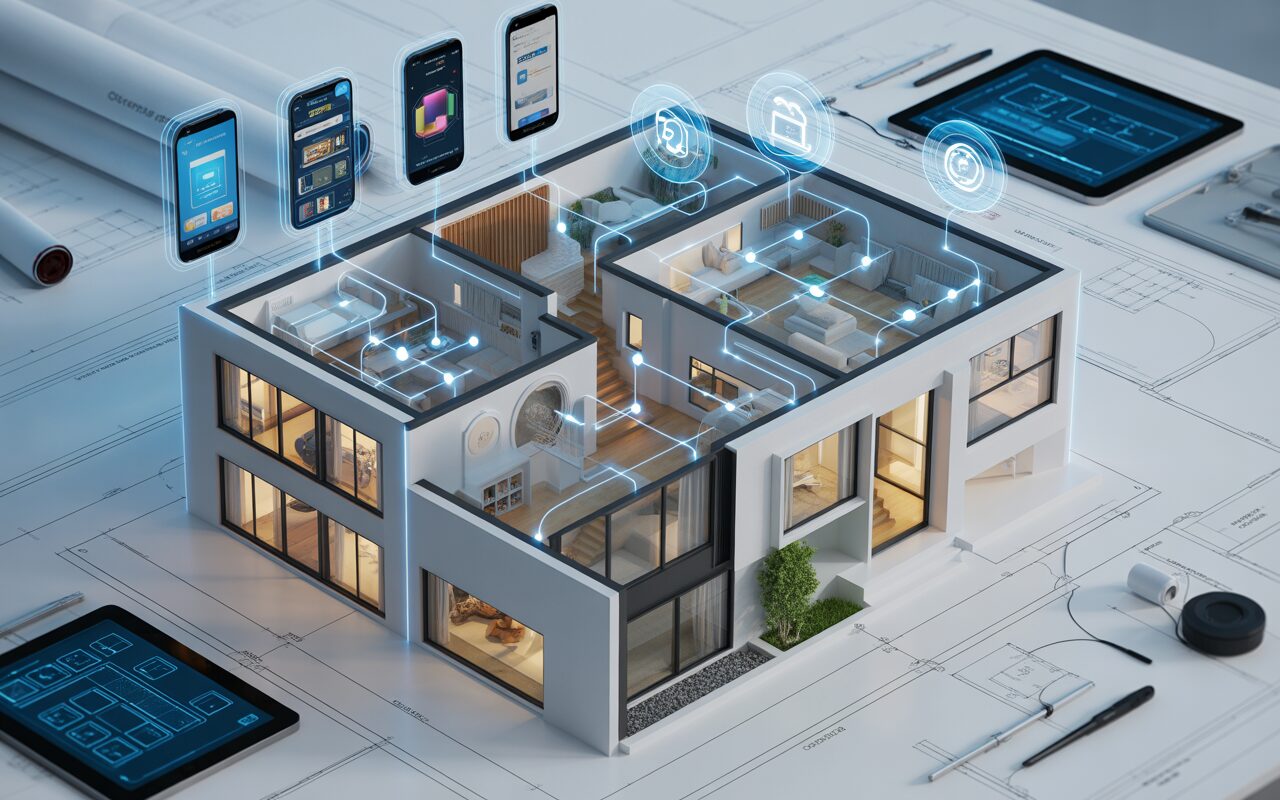🏠 Designing and Planning a Smart Home: A User-Centric Approach
The journey to a truly smart home begins not with a shopping list of gadgets, but with a deep understanding of the people who live within its walls.
A successful smart home integrates seamlessly into daily life, anticipating needs and offering genuine value, rather than simply adding complexity.
This requires a meticulous, user-centric planning phase that assesses individual needs, tailors solutions to unique lifestyles, and identifies the most critical areas for initial implementation.
💡 4.1 Assessing User Needs and Preferences
The foundation of any effective smart home design is a thorough user needs assessment.
Smart technology is only as valuable as its ability to solve real-world problems and enhance the quality of life for its occupants.1
This step requires a focus on individual habits, frustrations, desires, and the unique dynamics of the household.2
The Household Audit: Asking the Right Questions
The initial audit should involve every member of the household, as needs and technical comfort levels can vary widely.
It’s crucial to look beyond just the devices and focus on daily scenarios. Consider the following questions:
- Routines: What happens when you wake up, leave for work, arrive home, or go to bed? What mundane tasks could be automated? (e.g., “When I wake up, I want the bedroom blinds to open and the coffee to start brewing.”)
- Pain Points: What are the recurring frustrations in the current home setup? (e.g., “I always forget to turn off the basement lights,” or “The thermostat wars with my partner are endless.”)
- Goals: What are the primary objectives for the smart home? Security (do you need advanced facial recognition or just a simple camera?), Energy Efficiency (are smart thermostats and appliance monitoring key?), Convenience (do you want voice control for everything?), or Accessibility (are there occupants with mobility or sight limitations?).
- Comfort and Entertainment: How do you relax? (e.g., “I want to dim the living room lights and start a movie with a single voice command.”) Where are the main media consumption and social areas?
- Aesthetics and Design: How important is it that the technology is invisible or integrated seamlessly into the decor?
This process moves the conversation from “What can I buy?” to “How can technology make my life better?”
🧑🤝🧑 Customizing Solutions Based on Lifestyle
Once a comprehensive understanding of needs is established, the design shifts to customizing the technology to fit the unique lifestyle of the inhabitants.
A one-size-fits-all approach is a recipe for a cluttered, unused system. Customization must address the specific demographics and activities of the household.3
Lifestyle Profiles: Tailoring the Tech
| Lifestyle Profile | Primary Focus/Needs | Key Smart Solutions |
| The Young Professional / On-the-Go | Security, energy saving (when away), simple routines, fast Wi-Fi. | Smart locks, remote security cameras, geofencing for automated lights/thermostat, mesh Wi-Fi network. |
| The Family with Young Children | Safety, monitoring, scheduling/rules, entertainment zoning. | Door/window sensors, smart baby monitors, parental controls for Wi-Fi, multi-zone HVAC, robust whole-home audio. |
| The Retiree / AAL (Ambient Assisted Living) | Health monitoring, accessibility, ease of use (voice/large interface). | Fall detection sensors, smart medical alerts, voice-controlled lighting/blinds, simplified control panels. |
| The Tech Enthusiast / Hobbyist | Interoperability, maximum automation, sophisticated scripting (if/then/and), data monitoring. | Advanced home hub (e.g., Home Assistant), custom API integrations, comprehensive sensor arrays, energy monitoring. |
Designing for Future Flexibility
A crucial element of customization is building a system that can evolve. Lifestyles change: babies grow up, people work from home, and new health needs may arise.
The smart home should be built on a robust, interoperable platform (like Google Home, Apple HomeKit, or a dedicated hub like Hubitat or Home Assistant) that allows new devices from different brands to communicate seamlessly.
Choosing a reliable, high-bandwidth home network is the silent hero of this phase, ensuring that all devices can operate without lag or dropped connections.
🎯 Identifying Priority Areas
Designing an entire smart home at once can be overwhelming and costly.
The most effective strategy is to start with “low-hanging fruit”—areas where the investment provides the highest immediate value, addressing the most pressing needs identified in the assessment phase.
This phased approach allows users to get comfortable with the technology and demonstrate the system’s value before committing to a larger rollout.
The “Big Three” Priority Zones
Based on typical user needs, the following three areas generally offer the highest return on investment for the initial phase:
1. Security and Access 🔒
This is often the first priority because it directly impacts peace of mind.
Focus: Securing entry points and monitoring the exterior.
Solutions: Smart locks (keyless entry and remote access), doorbell cameras, and exterior security cameras. Automating lighting to turn on when motion is detected also enhances security.
2. Climate Control and Energy Efficiency 🌡️
Smart HVAC and lighting offer significant, measurable cost savings and enhance comfort.
Focus: Managing heating, cooling, and lighting to reduce waste and optimize comfort schedules.
Solutions: Smart thermostats (learning user habits and adjusting automatically), and smart lighting (dimming, scheduling, and using motion sensors to ensure lights are never left on unnecessarily).
3. Core Convenience / Key Routines ☕
These are the simple automations that eliminate daily micro-frustrations.
Focus: Automating one or two critical, repetitive tasks.
Solutions: Voice assistants for quick commands (weather, music), Smart plugs for automating appliances (like the aforementioned coffee maker), or a “Goodnight” scene that simultaneously locks the doors, turns off all lights, and adjusts the thermostat.
By focusing on these priority areas, the smart home design process becomes manageable, targeted, and immediately beneficial, paving the way for a holistic and seamlessly integrated future.

